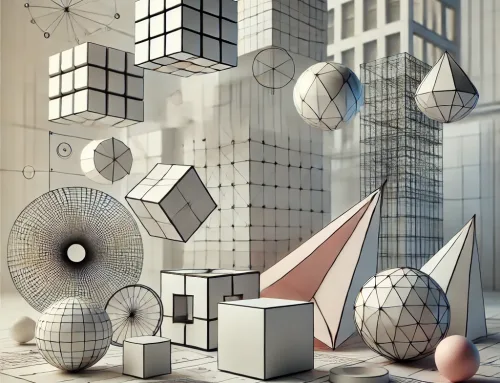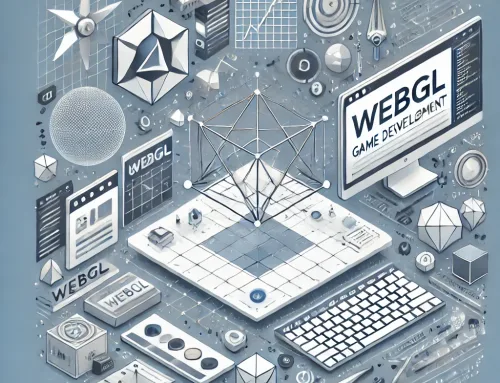Die Bedeutung von 3D Visualisierungen in der Geschäftskoordination.
Interaktive 3D-Visualisierungen zeichnen sich dadurch aus, dass sie komplexe Designs, Operationen, Funktionen und Mechanismen so darstellen, dass sie auch von Laien leicht verstanden werden können. Diese hervorstechende Eigenschaft bringt wiederum einen massiven Vorteil für die einzelnen Geschäftseinheiten mit sich.
Um eine hohe Koordinationsfähigkeit gewährleisten zu können, muss ein Unternehmen von der Produktion über den Vertrieb bis hin zum Service erhebliche personelle Ressourcen bereitstellen. Mithilfe von Visualisierungen können diese Prozesse deutlich vereinfacht werden.

Stellen Sie sich vor, sie gehen in einen Laden, um ein Handy zu kaufen. In einer traditionellen Weise lassen Sie den Vertriebsmitarbeiter wissen, was ihre Präferenzen für den Kauf sind und er wird die Modelle für Sie herausfiltern. Idealtypisch wird dieser anschließend alle wesentlichen Eigenschaften jedes Telefons ausführlich beschreiben und auch etwas näher auf die Unterschiede zwischen den Geräten eingehen. Ansich handelt es sich bei dieser Vorgehensweise in keinster Weise um eine klare Methode und nicht selten fühlt man sich auch irregeführt. Viele Informationen können auch nicht so schnell verarbeitet werden, die Folge sind Verwirrungen und sie können sich nicht genau daran erinnern, was der Vertriebler ihnen über das Vorgängermodell kommuniziert hat. Sie können nicht einfach zum Vorgängermodell zurückkehren und versuchen, ihre Zweifel mit dem Verkäufer zu klären. Ab einem bestimmten Level wird es für Sie anstrengend und frustierend, so dass es ihnen nicht leicht fällt, eine entsprechende Entscheidung zu treffen. Schließlich verzichten Sie auf den Kauf eines Modells, da Sie nicht völlig überzeugt sind. Wie wäre es, wenn Sie anstelle eines Vertreters dreidimensionale interaktive Bilder der verfügbaren Modelle sehen würden. Sie gehen beispielsweise in den Laden, geben einfach ihre Grundbedürfnisse in eine digitale Schnittstelle ein und Sie erhalten eine Liste aller Modelle, die ihren Kriterien entsprechen.
Anschließend können Sie jedes Modell auswählen und seine Eigenschaften auch selbst erleben. Sie können die Verarbeitungsgeschwindigkeit, Kamera-, Video- und Sprachanrufqualität, Akkulaufzeit, Speicherkapazitäten, Sicherheitsmerkmale, Lautsprecher, Kopfhörer, USB-Anschlüsse und vieles mehr überprüfen. Sie können schnell zwischen verschiedenen Modell hin- und herwechseln und somit die Produkte sehr einfach vergleichen. Ohne die Hilfe eines Zwischenhändlers können Sie so eine fundierte Entscheidung treffen und damit einen überzeugenden Kauf tätigen. Aus betriebswirtschaftlicher Sicht reduziert sich dadurch der Arbeits- und Personalaufwand, da weniger Ressourcen für die Kundenbetreuung eingesetzt werden müssen. Darüber hinaus können Kunden über 3D-Produktkataloge über mögliche Gefahren des Geräts informiert werden. Wird im 3D-Katalog auch über die notwendigen Schritte in Gefahrensituationen informiert, kann dadurch der Supportaufwand im Servicecenter einer Business-Unit reduziert werden.
Von der Entstehung der Idee über die Konstruktion, Herstellung, Service und Entsorgung des Endprodukts durchläuft das Produkt verschiedene Phasen, die in ihrer Gesamtheit als Produktlebenszyklus bezeichnet werden. In jeder dieser Phasen ist ein erheblicher Koordinationsaufwand erforderlich und selbst wenn nur ein winziges Element ins Stocken gerät, verliert auch das Endprodukt seine Vorteile. Deshalb helfen Visualisierungen auch von Anfang an. Die Produktidee muss den Mitarbeitern klar kommuniziert werden, damit Sie die gleiche Vision und Zielsetzung verfolgen können. Die potenziellen Investoren und Stakeholder werden auch wissen wollen, was Sie mit dem Projekt vorhaben. Normalerweise würde es viel Mühe und Zeit in Anspruch nehmen, das Projekt in einzelne Meilensteine zu zerlegen, so dass es für jeden verständlich ist. Aber durch die Visualisierung können Sie bequem jede körperliche Belastung reduzieren, da Sie leicht zeigen können, wie ihr Endprodukt aussehen wird und wie Sie planen, den Markt zu sichern.
Während der gesamten Design- und Herstellungsphase eines Produkts ist die Anzahl der beteiligten Mitarbeiter enorm und es ist nicht einfach, alle Prozesse reibungslos zu koordinieren. Die Herausforderung dabei ist, dass Designer, Hersteller und Zulieferer nicht von einem einzigen Standort kommen dürfen. Sie verbreiten sich vielleicht rund um den Globus, weil es mehrere externe Designer oder Zulieferer geben kann, um ihr Produkt fertigzustellen. Ein Unternehmen muss dafür sorgen, dass sie alle harmonisch zusammenarbeiten und zur Verbesserung des Produkts beitragen. Es ist absolut unmöglich, überall auf der Welt Arbeitskräfte zu rekrutieren, um jeden einzelnen Design- oder Herstellungsprozess zu überwachen. Hier können Visualisierungen leicht das gewünschte Design für jede Phase kommunizieren und wie es in das Endprodukt passt, so dass jeder Mitarbeiter genau weiß wieviel er leistet. Darüber hinaus könnte dies ihnen auch helfen, kreative Improvisationen zu machen, welche die Qualität des Endprodukts verbessern könnten. Das Personal, das sich mit der Bedienung von komplexen Maschinen und Anlagen beschäftigt, kann auch gut über den Mechanismus jeder einzelnen Maschine informiert sein und so mögliche Gefahren für Verletzungen und sonstige Schäden reduzieren und zudem die termingerechte Ausführung sicherstellen. Zusätzlich werden auch die Dinge für die Marketing-Abteilung einfacher und sie werden schneller wissen, welche die einzigartigen Eigenschaften der jeweiligen Produkte sind.
Der große Albert Einstein sagte einmal: „Wenn man etwas nicht einfach erklären kann, versteht man es auch nicht gut genug.“ Dieser Satz bringt den Vorteil von Visualisierungen auf den Punkt. Jede komplexe Information, jedes Design und jede Bedienung wird verständlich und deshalb ist Visualisierung auch das Werkzeug der Zukunft.
Vielen Dank fürs Lesen.


